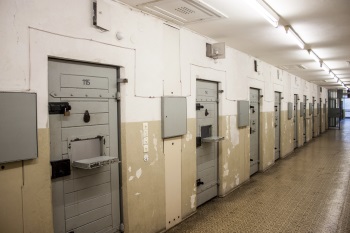When the Washington State DOC’s former chief Bernard Warner describes solitary confinement, he doesn’t sugarcoat it. “I saw firsthand the conditions and environment in those housing units,” he tells TakePart.com. “It was pretty horrific.”
The Bureau of Justice Statistics reported that around 20 percent of prisoners have spent time in solitary confinement. At any given time in the U.S., there may be anywhere from 25,000 to 80,000 people kept in some form of isolation—often known as “ad-seg” (short for “administrative segregation), “the hole,” “the SHU” (segregated housing unit)—according to a 2015 assessment from the Yale Law School and the Association of State Correctional Administrators.
 Typically, it has been defended solely as a protective measure, as the “worst” prisoners are tucked away from the rest. But Lance Lowry, a Texas sergeant of correctional officers, admits that most prisoners are not Hannibal Lecters.
Typically, it has been defended solely as a protective measure, as the “worst” prisoners are tucked away from the rest. But Lance Lowry, a Texas sergeant of correctional officers, admits that most prisoners are not Hannibal Lecters.
The excessive use of segregated housing has raised questions surrounding the safety and well-being of those in isolated units—both the prisoners and the officers assigned to them.
“When you cut out social interaction, you’re dealing with a person who has nothing to lose,” Lowry explains, “and that’s extremely dangerous.”
Self-harm, panic attacks, and hallucinations are just a few risks associated with prolonged isolation. The method has also been shown to exacerbate mental illness and increase the risk of suicide.
Executive director of the Colorado DOC Rick Raemisch says isolated prisoners are often so “scared, dehumanized, and desocialized” that they resist reentering the general population unit.
Raemisch once spent 20 hours in solitary just to write about it. Believing in the need for reform, he began an assessment: Who was in solitary? Why were they there? What kinds of programs would help them transition back out of isolation?
Lowry, Raemisch, and Warner are joining a nationwide movement to see a more constructive culture in America’s prisons. Warner, for instance, has helped develop programs to encourage healthy transitions out of solitary, even turning an ad-seg utility closet into a classroom. “We haven’t had any assaults in these classrooms,” he says.
Raemisch and Warner agree that there are always exceptions, and not everyone can coexist safely in the general prison population. Raemisch asserts that kind of prisoner is practically one in 20,000.
“But that doesn’t mean you give up on him,” says Raemisch. “You keep trying.”
Prison Fellowship advocates for the creation of a safe, constructive prison culture, affording dignity to all those who find themselves inside prison walls. In some instances, that goal necessitates the removal of individuals who pose a threat to others. But we hope that solitary confinement would be a last resort, and a temporary one at that—a form of intervention that includes a clear path back to the general prison population. Every prisoner is a person created in the image of God, and we must not overlook their God-given need for fellowship.
For more information about solitary confinement, and Prison Fellowship’s efforts to limit excessive use of the practice, click here. And to keep up-to-date on what Prison Fellowship is doing to create a constructive prison culture in corrections facilities across the country, and to learn how you can get involved, sign up to be a part of our advocacy network.